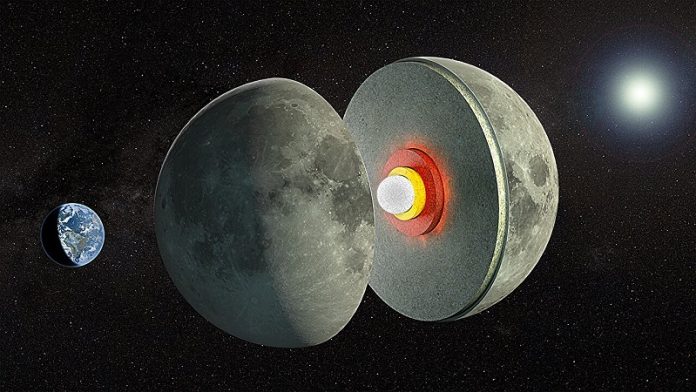
Scientists have uncovered new evidence that suggests the moon might have a partially molten layer deep beneath its surface.
This discovery, led by Sander Goossens and his team, could provide important insights into the moon’s structure, its origins, and how it has evolved over time.
We already know that the moon’s outer crust is covered in craters, beneath which lies a solid mantle made mostly of the mineral olivine and a metallic core.
But some scientists have long suspected that there might be a layer of molten rock between the solid mantle and core.
While previous studies have produced mixed evidence about the existence of this molten layer, the new findings, published in AGU Advances, strongly support the idea.
The new evidence comes from analyzing how the moon’s gravity changes due to tidal forces.
Just as the moon’s gravity causes Earth’s oceans to rise and fall, the gravitational pull of Earth and the sun affects the moon’s shape and gravity as well.
These tidal forces warp the moon slightly, and by studying how the moon responds to these forces, scientists can learn more about its deep interior.
In earlier research, scientists had focused on how the moon’s gravity changes in response to monthly tidal forces.
However, Goossens’ team used data from NASA’s GRAIL mission and the Lunar Reconnaissance Orbiter to study how the moon’s gravity changes over the course of a year for the first time.
By combining both the monthly and yearly data, along with information about the moon’s average density, they were able to create a computer model of the moon’s interior.
Their model showed that without including a softer, partially molten layer at the bottom of the mantle, it was impossible to explain the gravity measurements they observed. This means that a gooey layer deep within the moon is likely real.
The researchers believe this molten layer might be made of a titanium-rich mineral called ilmenite, but they’re not yet sure what heat source could be keeping this layer molten for billions of years.
More research is needed to confirm the exact composition and to understand the heat that keeps it partly melted.
This discovery brings us one step closer to unlocking the mysteries of the moon’s deep interior and how it has evolved over time.
Source: American Geophysical Union.



